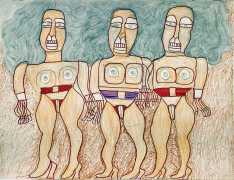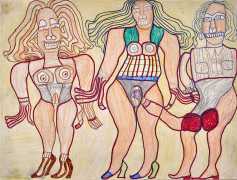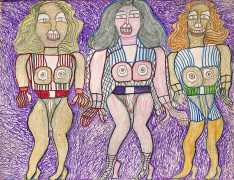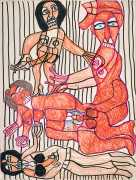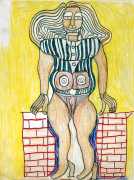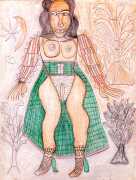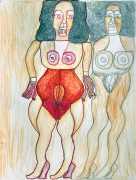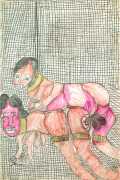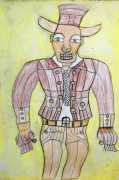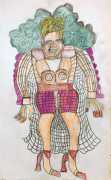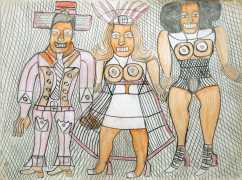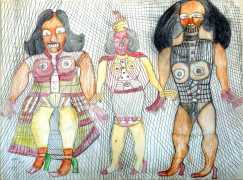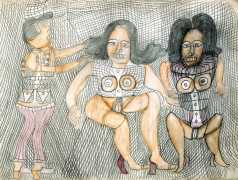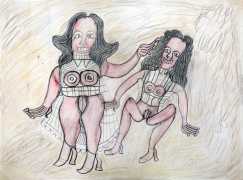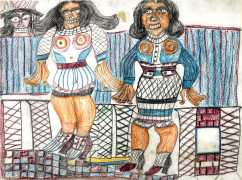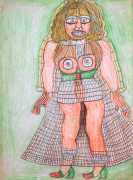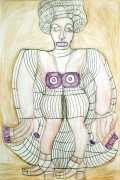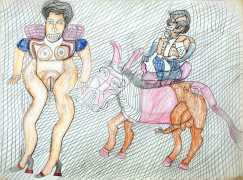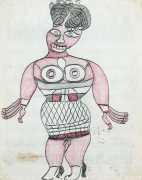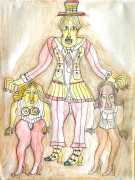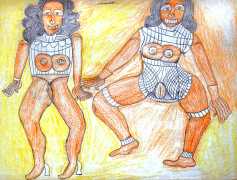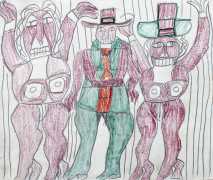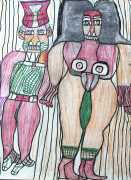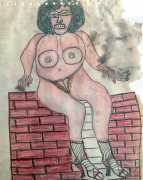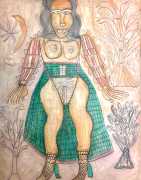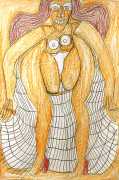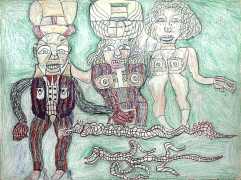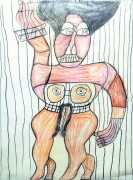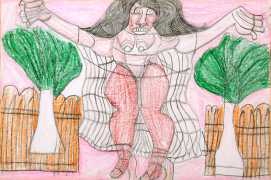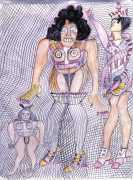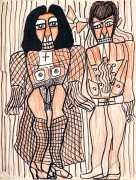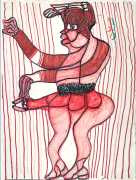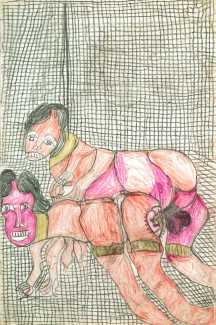
For his trademark drawings Speller liked to use large sheets of paper, outlining his subjects in graphite pencil, then filling in the figures and block patterns with crayons or coloured pencils. All of his works fill the page to the edges, except his renderings of single figures, which stand alone against a white background. Speller made thousands of drawings in his life-time, of which several hundred have survived.
Many of his drawings are of women, mostly long-haired, big-breasted white women with exposed genitals. It is important to see these as inventive metaphors for a society which always dangled before him more than it was willing to deliver. The women are fancy-dressed, threatening, tempting. Exposed breasts and genitals form a grotesque mask. Above all they are free. As the historian William Arnett writes, ‘Speller’s anger is not directed at free white women, nor at any women; these women are merely graphic reminders of the freedom he cannot experience, of the gap between races and classes he cannot bridge. Speller adds ironic touches and comments. Naked women, for example, wear crucifixes and high-heeled shoes. To embellish the forbidden fruit simile, Speller refers to their breasts as "Christ apples". He gives the most lascivious women the simplest southern "white lady" names: Jean, Sally, Marie, Peggy. He occasionally portrays black women, but still unattainable ones: fancy-dressed women of the streets; straight-haired "high yellows", and educated woman in graduation attire.’
Patterns play a crucial role in Henry Speller’s composition. Stripes and grids function as movement from one plane to another, such as from clothes to skin or from inside to outside of a building. Art historians have drawn a connection between Speller’s patterns and African-American quilt-making traditions, with their improvised rectangular and square grids.
Slipping daily between unending manual labour and the solace of blues nightclubs brought forth the contrasts in Speller’s work. His visual style, and those that mimic it, has become known as ‘blues aesthetic’, blues music influencing the visual aesthetic in creating fantasy from pain observed at first-hand.


